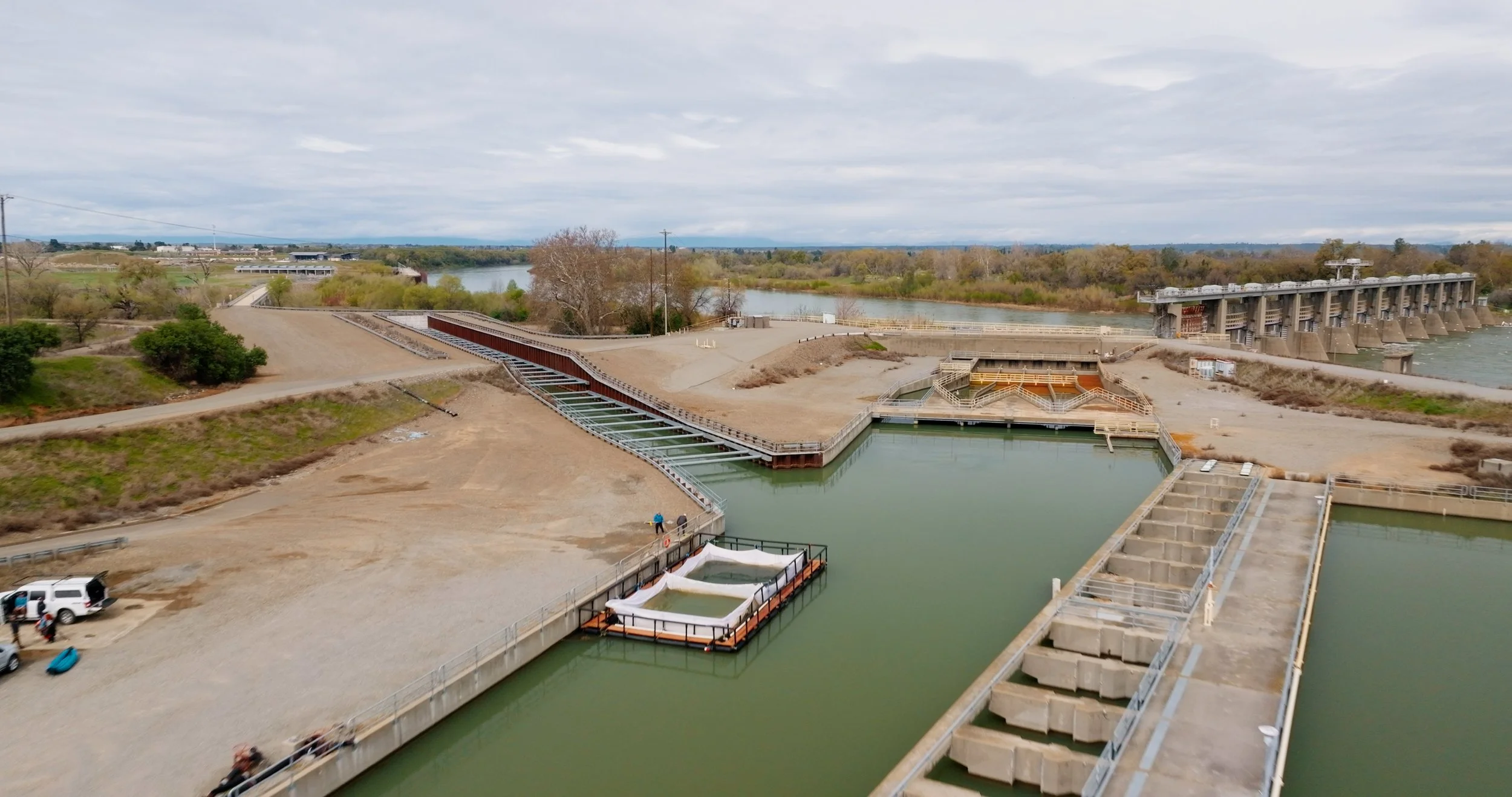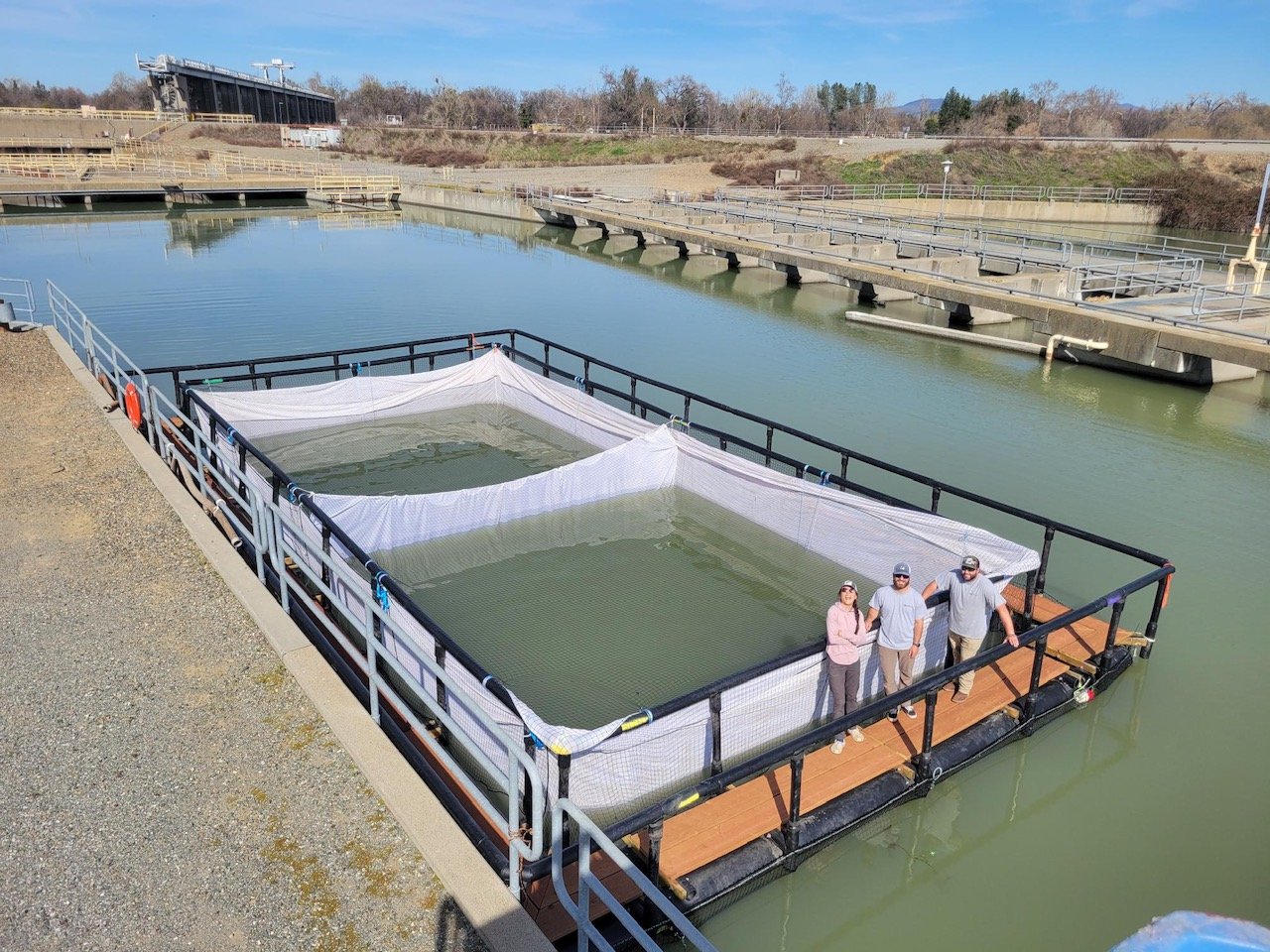
Net Pen Project
Helping Salmon Return to Spawning Sites in the Sacramento River
A coalition of farmers and fishermen take on a first of-its-kind recovery project. Approximately 540,000 Sacramento fall-run juvenile salmon spent 3-4 weeks growing in large protective net pens in the Tehama- Colusa Canal forebay so that the fish could imprint on Sacramento River water.
The Bridge Group is very appreciative of the Coastside Fishing Club which donated the net pen which this study could not occur without.
The Bridge Group, a solutions-oriented coalition consisting of the Sacramento River Settlement Contractors, Golden Gate Fishermen’s Association, Pacific Coast Federation of Fishermen’s Associations, the NorCal Guides and Sportsmen’s Association and Northern California Water Association, is working with the US Fish and Wildlife Service and the Tehama-Colusa Canal Authority to implement this project.
The Question Before Scientists:
Can imprinting juvenile Chinook salmon on Sacramento River water, before trucking them to the bay, reduce the rate of returning adults straying into other rivers?
The Problem?
Lack of Imprinting Leads to Straying Fish
Many salmon smolts born and reared at the Coleman National Fish Hatchery are trucked to the San Francisco Bay where they migrate out to the Pacific Ocean. However, stray rates for trucked fish, even from other mainstream hatcheries (Feather, American, Mokelumne) can impact the hatcheries’ ability to obtain enough broodstock to meet their production goals.
The Net Pen Project
Juvenile salmon are fitted with coded wire tags at the Coleman National Fish Hatchery along Battle Creek and transferred to a net pen – an in-water space with a predator protection net – in the Tehama Colusa Canal forebay system which is directly connected and receives fresh water from the Sacramento River.
This group of fish was released in the river with other hatchery fish during specific pulse flows in hopes of improving survival.
Goal & Results
Scientists working on the net pen project hope to answer the lingering question of whether salmon that imprint at this life stage on Sacramento River water will return to the upper river as adults. Salmon typically spend about three years in the Pacific Ocean before returning upstream so it is expected to have our first results in 2028 or 2029.
Potential Future
As part of a coordination with U.S. Fish and Wildlife, a full analysis of the project will be completed to determine best practices and outline further recommendations for potential future efforts. The hope is to bring back the study in 2026 with the partners involved in the inaugural project.











